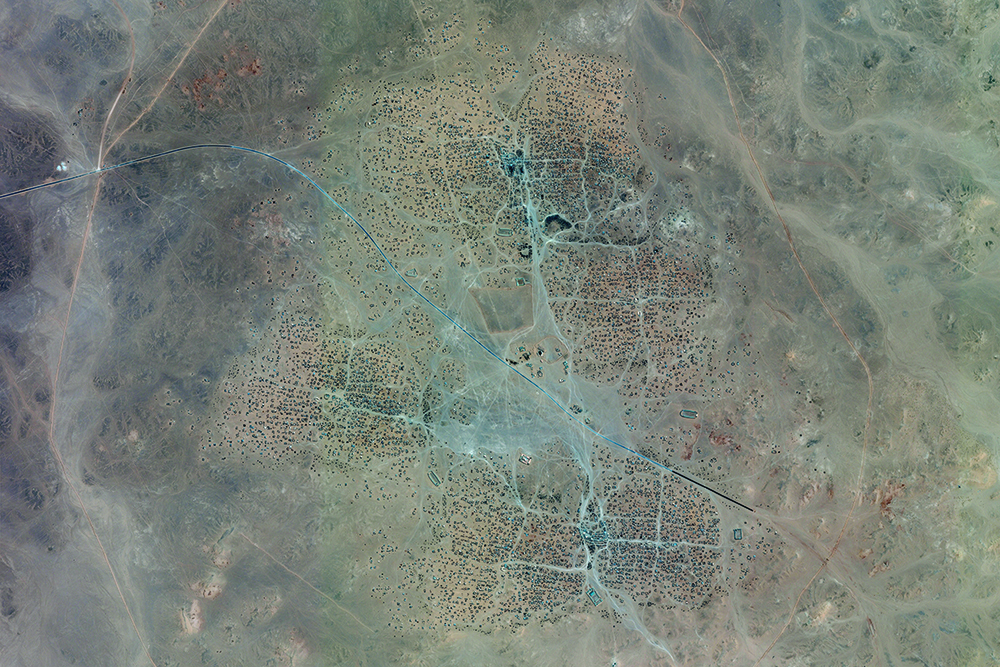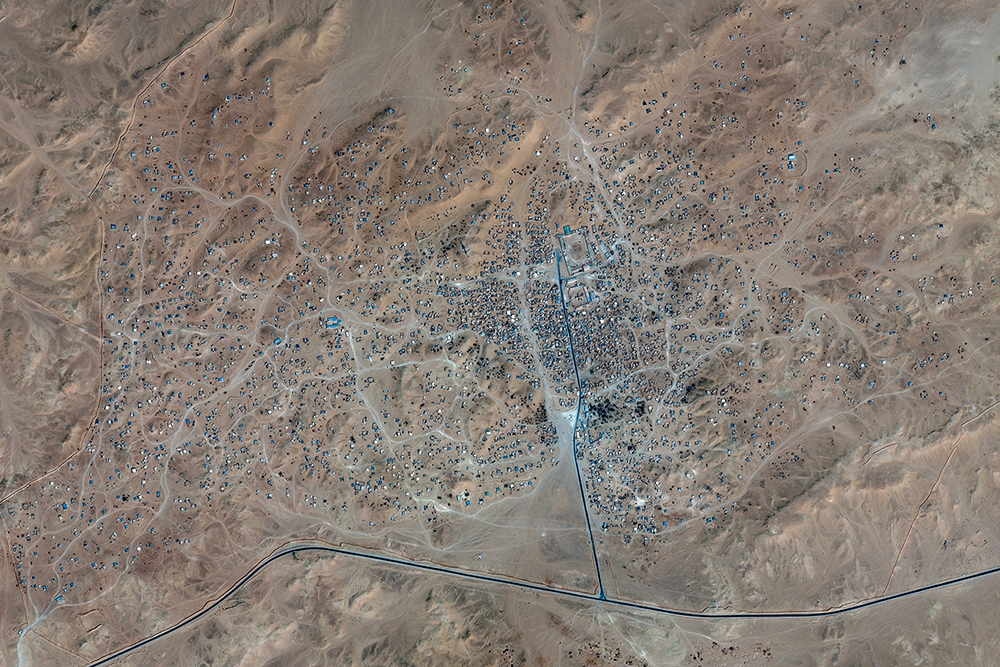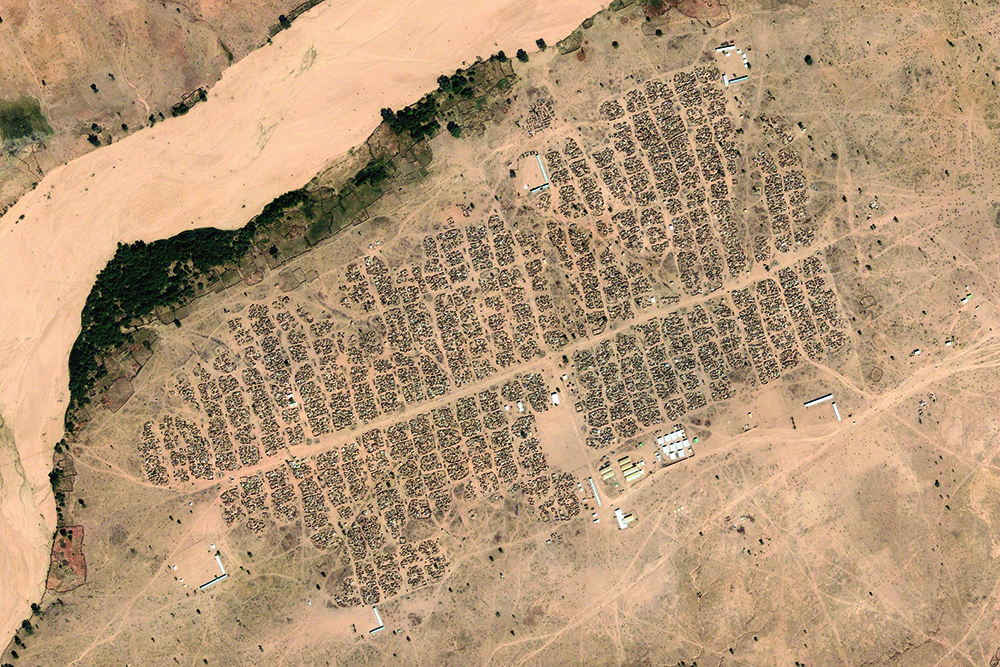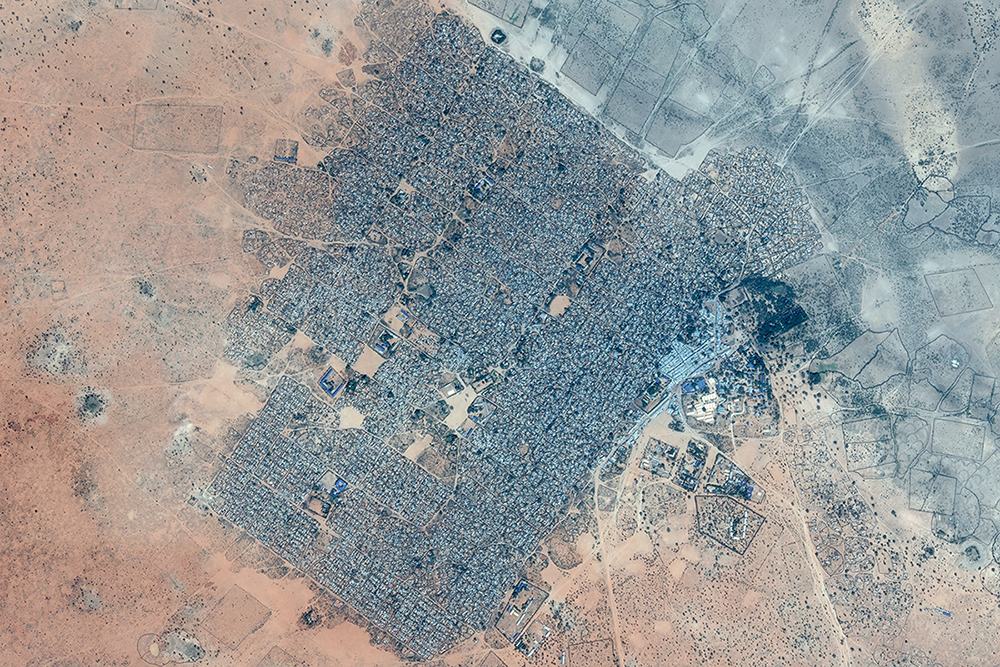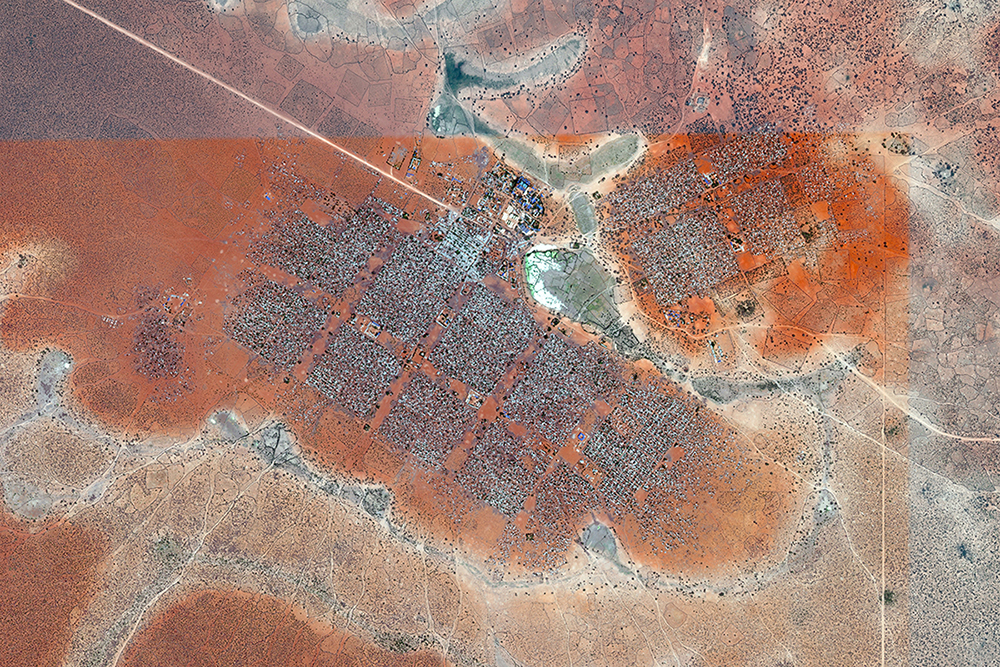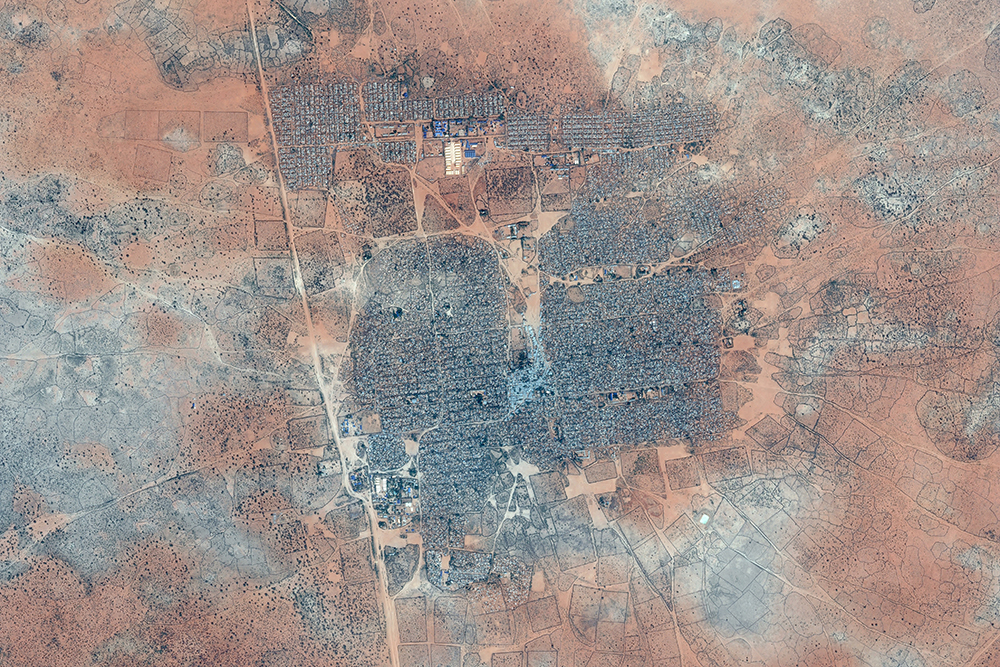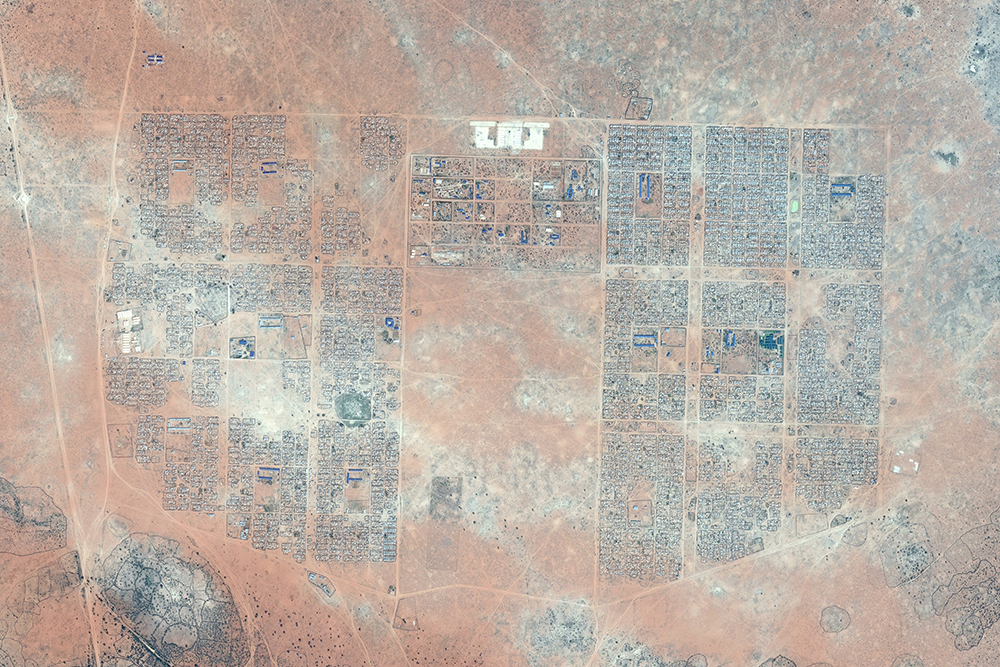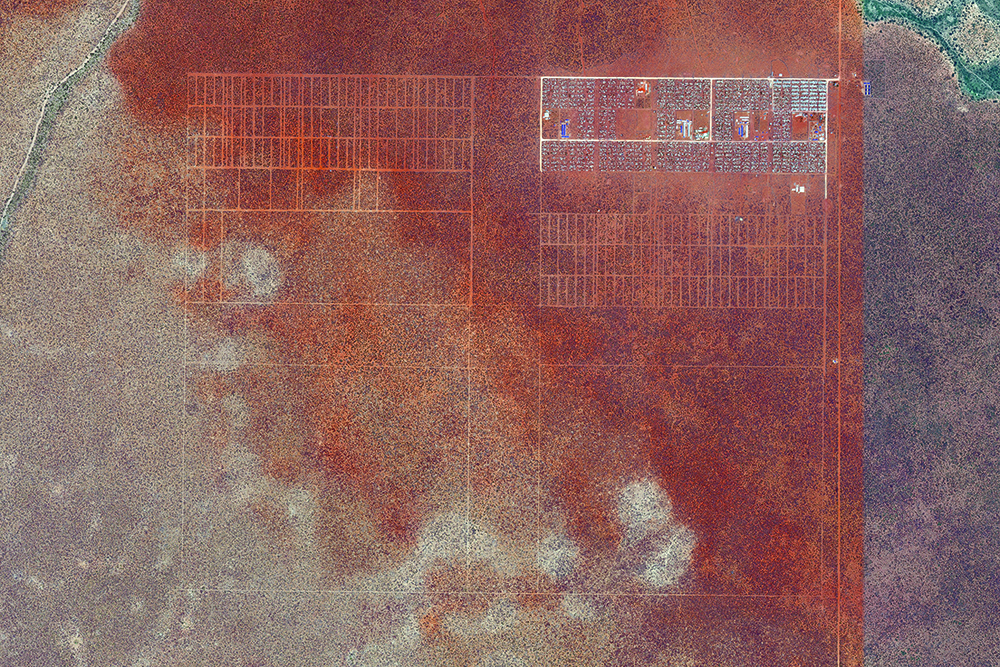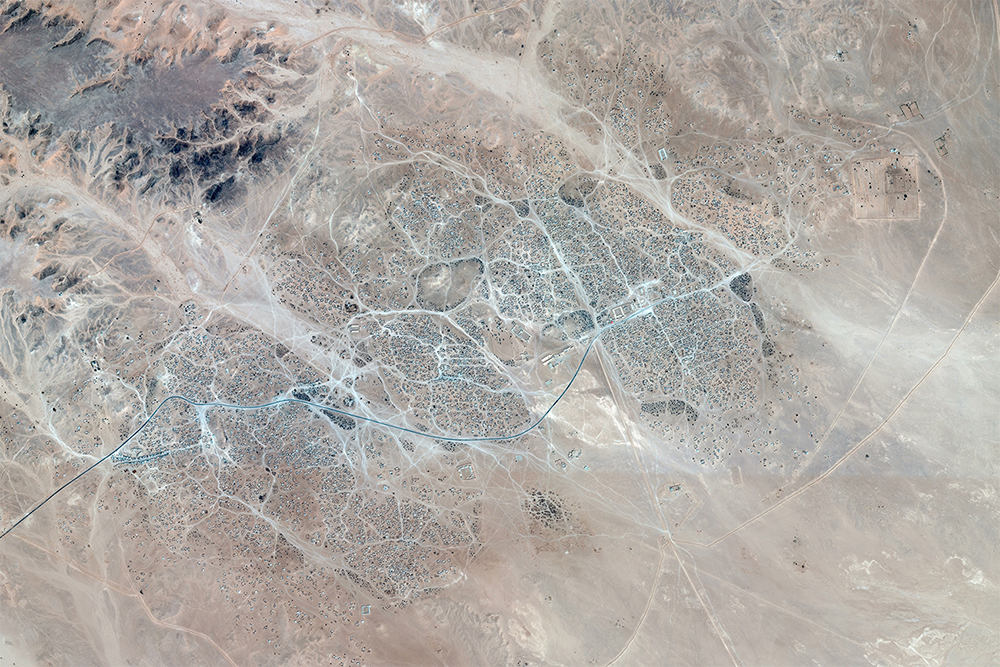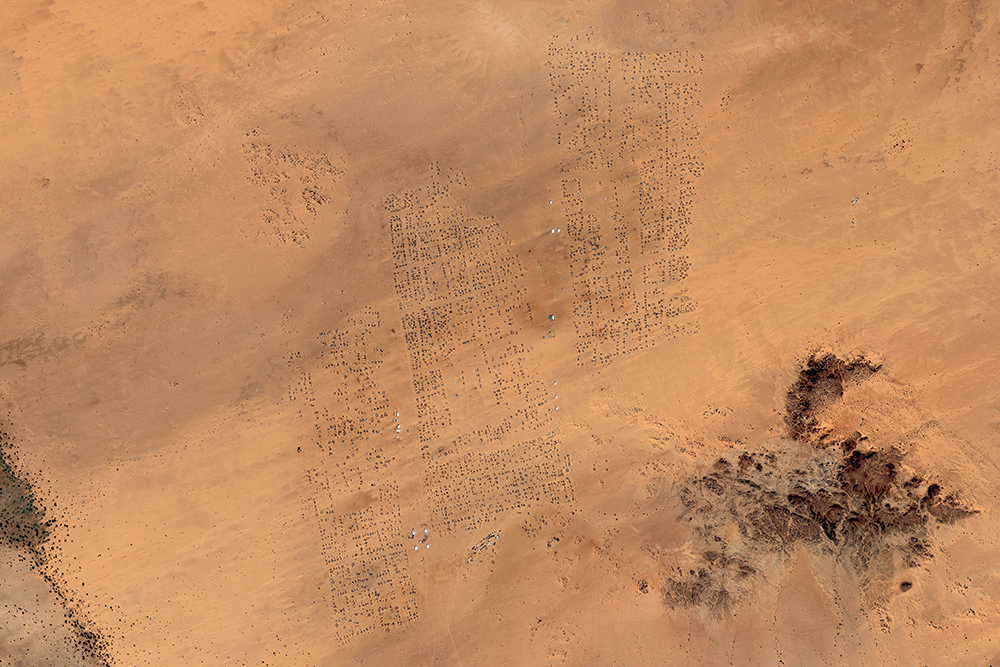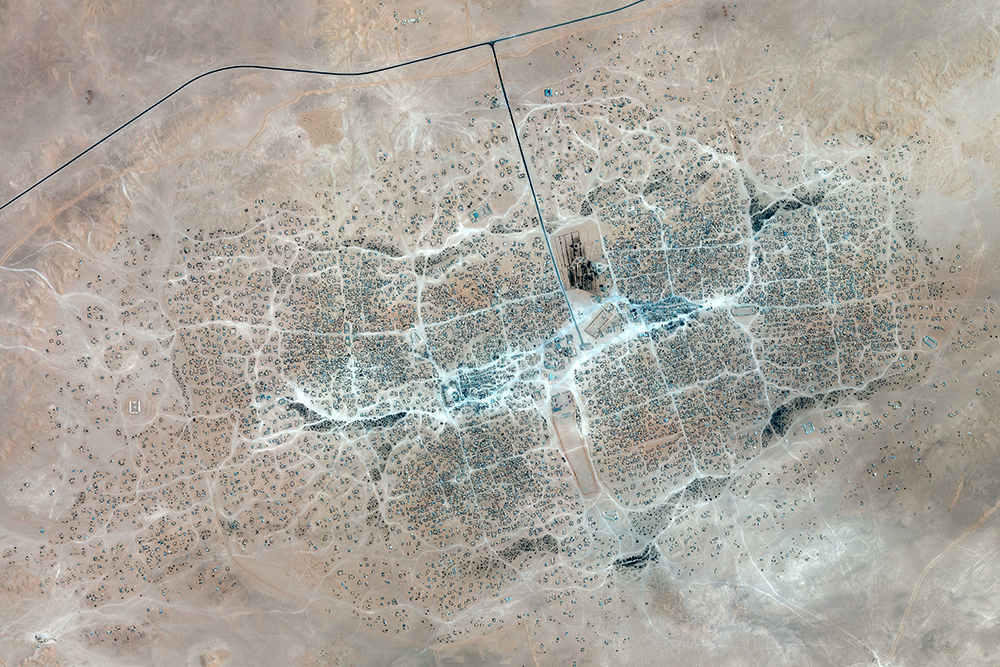Marco Tiberio
SATELLITES
Mass migration led to the creation of new residential areas. Although in Europe we still don’t realise it, because the cases are limited - Calais was the most striking example - and because we prefer forms of detention - rather than cohabitation - this doesn’t mean it is not happening in other parts of the world. Real cities have been shaped by decades of mass migration and the most clear examples of this phenomenon can be seen in Africa (especially Kenya, Chad and Western Sahara). Satellite imagery is the mean which help us to understand this evolution in the most consistent way. These satellite-cities, even if often are not considered as actual cities, develop as real urban conglomerates, in different ways according to their geographic position and the communities inhabiting them. The goal of “Satellites” is to analyse, through satellite imagery, these new cities, give them a visual dignity and investigate how they evolved, following the principles of town planning. In addition, we want to underline how public satellite imagery in Europe (e.g. Google Earth) shows no traces of these conglomerates, denoting a “censorship” which prevents a clear understanding of the matter. Exemplar is the situation of Calais, where public satellite imagery remained not updated between 2004 and 2015, even though refugee camps where clearly spreading around the town. I soon realised that public imagery wasn’t updated and showed no traces of the refugee camps that were established in that area during the years. It’s interesting to see, how on the other side, satellite imagery is used in the African refugee camps case also to keep tracks of their evolution. I decided to focus on Africa and some countries in particular, because it gave me at the same time more heterogeneity and unicity of images and results, and also because some cases offered more representatives images and more precise data. Each image is the result of the composition of hundreds HD screen- shots stitched together.
Marco Tiberio
Marco Tiberio (b. 1988) is a creative director and photographic artist based in Amsterdam. His main field of interest is how human beings react to the changes in society and how they interact with it and the world they live in, being it physical or not. He likes to challenge serious topics in an ironic manner, turn them around and take the viewer in an unexpected journey where classic photography, video, print and generative photography merges together. His goal is to find new ways of investigating topics in order to make them more accessible to a broader public and give them new interpretations. With art director Maria Ghetti, he founded a creative studio and publishing house called Defrost. Their first book “Immorefugee” was selected among the best photobooks of 2017 by Martin Parr. They just published the studio’s second publication, “Enlarge Magazine”, the first magazine about penis enlargement. Marco also teaches at the Academy of Architecture of Amsterdam.


